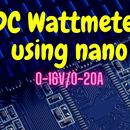Introduction: Variable Power Supply Using LM317 (PCB Layout)
Hello guys!!
Here I am showing you the PCB layout of a variable power supply. This is a very popular circuit which is readily available in the web.it uses the popular voltage regulator IC LM317. For those who are interested in electronics, this circuit is very useful. The basic requirement of a DIY hobbyist is a variable power supply. Instead of buying very costly bench power supplies, this circuit will help them to build a power supply that can control voltage and current independently.
Supplies
- LM317 Voltage Regulator
- Transistor - MJE3055
- Ceramic capacitors- 0.1uf 2nos,0.2uf 1nos
- Resistors- 220ohm,1K /0.25W,0.1ohm/5W
- Potentiometer - 5K,10K
- LED- 5mm
Step 1: Circuit Diagram
The working of the circuit according to my knowledge is described here. The voltage regulator IC LM317 is used to adjust the output voltage. Resistances R1 & R2 create a voltage divider circuit and it is connected to the adjustment pin of the IC. By varying the potentiometer R2 the output voltage can be varied. Next comes the power transistor Q1(MJE3055), since the maximum current that can be passed through the LM317 is limited to 1.5A this transistor is used to increase the current capacity of the power supply. The maximum collector current of Q1 is 10A.if you want to increase the current capacity then put transistors in parallel to Q1. While putting parallel transistors connect balancing resistances in series with the emitter. Here I have connected only one transistor and a 0.1ohm resistance in series since I was having only that with me.
To control the output current which is the collector current of Q1, the base is connected from the emitter of transistor Q2(BD139). The base of the Q2 is controlled by a voltage divider circuit made by potentiometer R3.
Some disc capacitors are connected in parallel, these are for some filtering purposes.LED is connected in parallel for power indication.
You can also use LM338 instead of LM317 which is also a variable voltage regulator having more current capacity.
NOTE: Don't connect an electrolytic capacitor on the output side. This will create a very slow variation of output voltage.
Use of balancing resistors
If the output current or power dissipation in the output transistors approaches more than about half
their maximum rating, parallel transistors should be considered. If parallel transistors are used, balancing resistors should be installed in the emitter of each paralleled transistor.
The value is determined by estimating the amount of difference between Vbe between the transistors and having that amount, or a little more voltage, dropped across each resistor at the maximum output current. The balancing resistors are chosen to offset any Vbe differences due to transistor variability, manufacture or temperature, etc. These voltage differences are usually less than 100 mV or so. Values of 0.01 Ω to 0.1 Ω are often used to provide a drop of 50 to 75 mV. They must be capable of handling the current and power dissipation.
For example, if 30A is the total output current and if we are using 3 transistors then current through each transistor should be 10A(30/3=10A). So to achieve that, balancing resistors should be connected.
Let∆Vbe=0.1v then Rb = 0.1/10=0.01ohm
Power rating = 10*10*0.01=1W
Attachments
Step 2: PCB Layout
The pdf file of the PCB layout is provided here. You can download it from here.
Dimension of the PCB = 44.45x48.26mm.
You can see a top copper layer in the PCB(Red) But I have provided you with a single layer PCB layout with vias. So that you can use a jumper wire to connect the two vias.
Step 3: Finished Board
After etching the PCB place the components carefully and solder it. The two potentiometers are connected to the board through wires. I have used a jumper to connect the two vias from the top side of the board.
To dissipate the heat generated from the MJE3055 and LM317 use a suitable heat sink.
I have tested this circuit with input supply 16V /5A and I was able to vary the voltage from 1.5V to 15V and current from 0A to the maximum load current i.e less than 5A
NOTE: Provide a separate heat sink for both transistor and regulator IC. Make sure that the two heat sinks do not come in contact with each other.
Hope this will be helpful to those who are looking for a power supply that can control both voltage and current
Thank you!!













